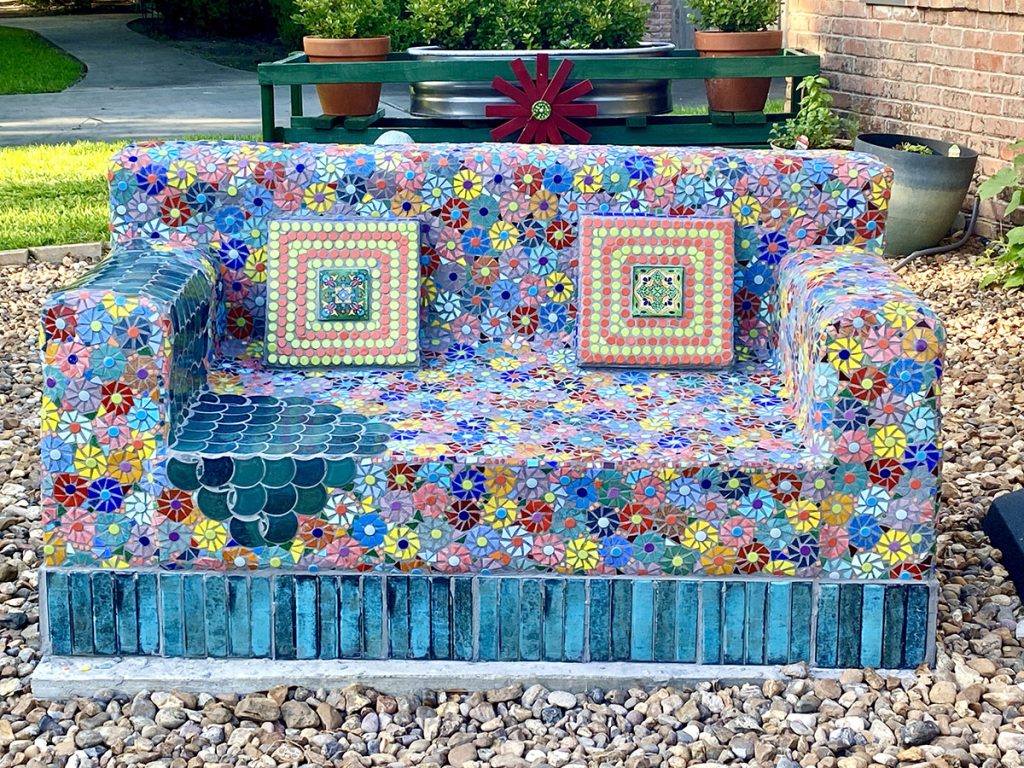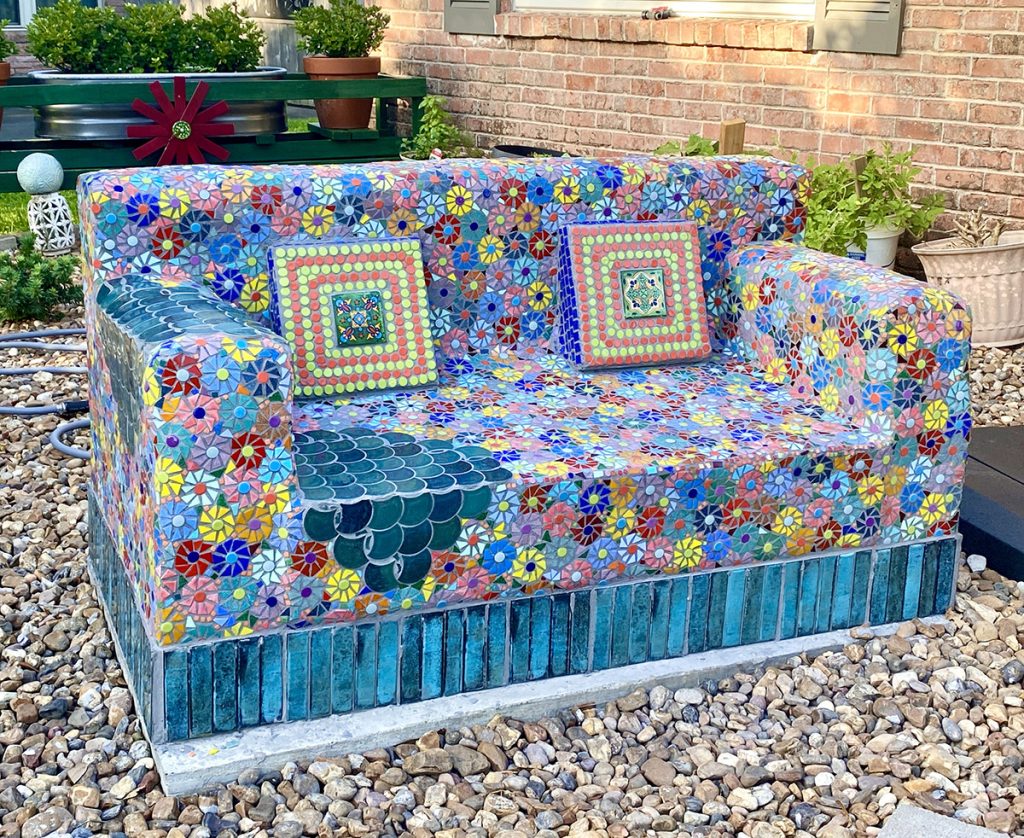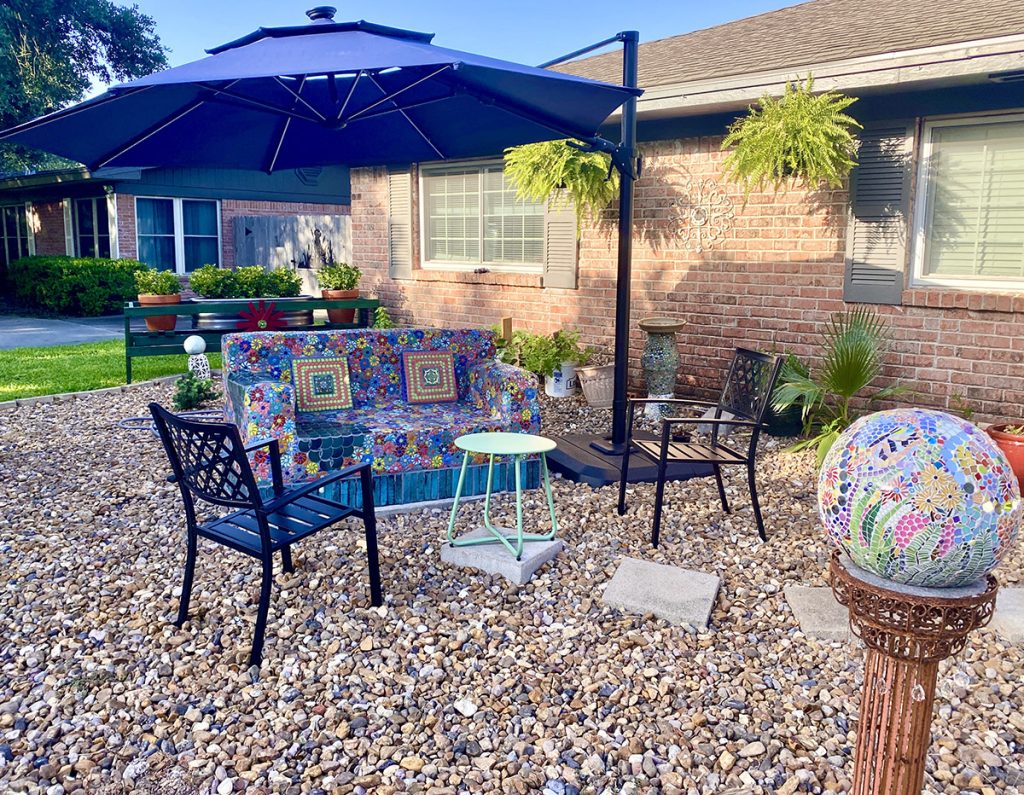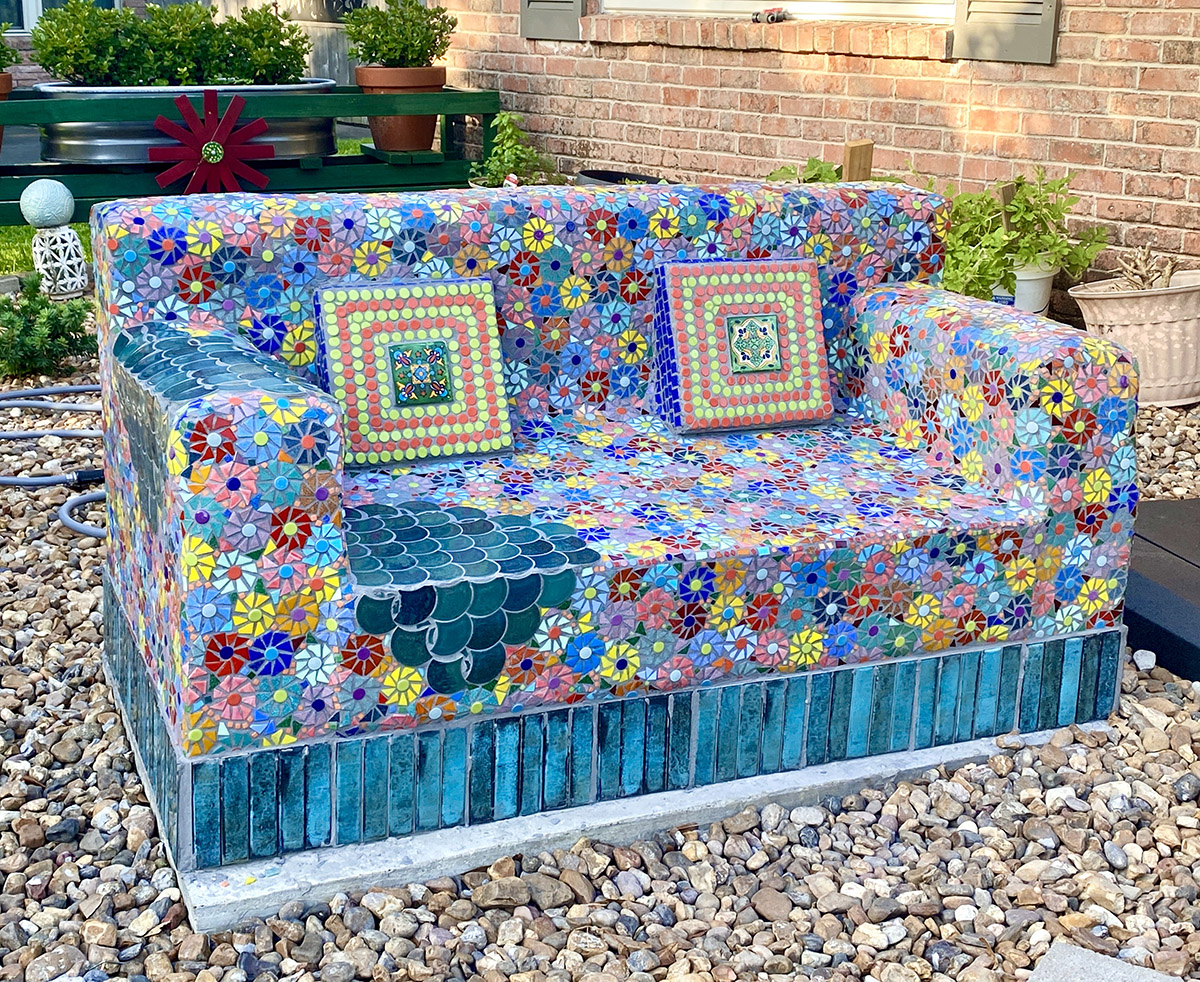Artist Candy Hahn recently completed a mosaic sofa bench for her patio area, and the color scheme and floral pattern are nothing short of inspiring.
Candy’s mosaic bench also reminded me of one of our central missions as a supplier of art materials, and that is to promote best practices.
We live in the misinformation age, and too many how-to videos and articles for art are how a novice or generalist did something in a novel way and are not the best practices a specialist would use.
The irony is that best practices are usually easier than the improvised methods artists come up with, and these practices definitely produce longer-lasting art. This is particularly true for outdoor mosaic.
Structural Base
If the structure is not intended to be moved, the base could be mortared cinder block or even reinforced concrete in the form of a hollow shell.
Keep in mind that cinder block must be enclosed in a shell of mortar because cinder block is porous and vulnerable to freeze damage.
Remember that point even if you are only planning to mosaic one side of a cinder-block wall.
Water freezing inside the cinder blocks will break them free from the mortar between the blocks if the back is left un-mortared and unsealed.
Candy says she used cinder blocks to build her structure and that she wrapped the whole structure in several layers of fiberglass mesh plastered with thinset mortar.
Notice the concrete pad, which insures that the cinder-block structure is evenly supported so that the blocks don’t separate at the mortar joints.

Moveable Base
For a mosaic sculpture that is moveable or one that doesn’t require a concrete pad, a base could be made from hard expanded polystyrene, which comes in sheets of varying thickness and blocks.
Hard expanded polystyrene can be glued using a white PVA adhesive such as the Weldbond we sell.
The structure of hard polystyrene would need to be wrapped in a tough skin of several successive layers of fiberglass mesh and thinset mortar.

Mounting the Mosaic
For an outdoor mosaic, glass tile should be mounted by pressing a face-mounted sheet into thinset mortar. After the mortar hardens, the Mounting Tape is peeled from the face of the mosaic, which is then grouted.
Construction adhesives, caulks, and silicones should not be used for mounting glass mosaic tiles on surfaces subjected to loads or impacts. Those materials are compressible, and movement of tiles under a load causes cracks in the grout.
Also, construction adhesives and polymers are made for maximum strength but not archival life. Many have an expected life of less than 30 years.
Thinset mortar is what we use for our mosaics.

Lessons Learned
Candy says that she should have used molded glass petal tiles instead of cutting square tiles diagonally to make the petals.
I’m not sure I agree. Of course, it would be faster to use leaf-shaped tiles to render the petals, but the problem is that all of those tiles would be the same exact shape.
The hand-cut tesserae Candy used make the mosaic much more interesting at close inspection because they have variation.
We artists tend to see the “flaws” in our work, and these quirks usually aren’t noticed by the viewer or thought of as flaws.
In fact, I suspect Candy’s eye sees some petals that she wished she could redo without realizing that these occasional odd cuts add something important, a testament to the hand-made authenticity of the work.
In an age of factory precision and mass production, these hand-made touches are more important than ever.
I love the overall look of this mosaic, but knowing that it would still be interesting at closer inspection is the icing on the cake.
Modular Implementation
I prefer projects that are built from smaller stand-alone projects that are completed over time instead of one large project executed all at once.
The all-at-once approach requires hired labor and expense and noise and dust. Working this way makes the experience more like a stressful construction project than art, and you just want to be done.
On the other hand, making art by yourself at your own pace is relaxing.
I like the photo of Candy’s patio area because it looks like a larger assemblage project in progress. I see spaces for at least two mosaic planters.


Leave a Reply